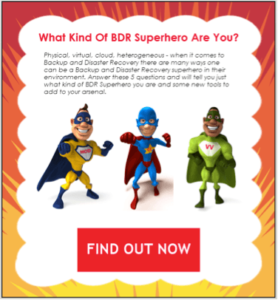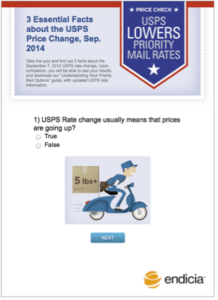In 2014, digital marketers started hearing a lot about quizzes. Did you take BuzzFeed’s  “What City Should You Actually Live In?” quiz when it was hot? As of March 3, 2015, it had racked up 20,738,516 views, and is generally credited with launching the BuzzFeed quiz empire.
“What City Should You Actually Live In?” quiz when it was hot? As of March 3, 2015, it had racked up 20,738,516 views, and is generally credited with launching the BuzzFeed quiz empire.
Or remember this one from the New York Times: “How Y’all, Youse and You Guys Talk: Answer the questions to see your personal dialect map.” It was the highest viewed New York Times content published in 2013.
Or what about the quiz that is still being shared on social networks: The 36 Questions that Lead to Love. Between the original New York Times article, the many apps based on the questions, and the follow-on articles telling the stories of various couples that have taken the quiz, it is on track to be one of the most trafficked – and talked-about – New York Times stories in 2015.
 Meanwhile, as the B2B marketing conversation turns toward engagement and dialogue, revenue marketers are starting to catch the quiz craze and see some great results. Corporate Performance Management software company Prophix created a quiz called “Take the CPM Challenge” that saw a 47% clickthrough rate and 57% lead submission rate. And data backup and disaster recovery company Unitrends developed a BDR Superhero personality quiz that generated 5,100 new leads and contributed $1.5M in new sales pipeline in three months.
Meanwhile, as the B2B marketing conversation turns toward engagement and dialogue, revenue marketers are starting to catch the quiz craze and see some great results. Corporate Performance Management software company Prophix created a quiz called “Take the CPM Challenge” that saw a 47% clickthrough rate and 57% lead submission rate. And data backup and disaster recovery company Unitrends developed a BDR Superhero personality quiz that generated 5,100 new leads and contributed $1.5M in new sales pipeline in three months.
Yes, quizzes are everywhere – yet the appetite for them seems to be increasing. According to Demand Gen Report’s 2014 Content preferences survey, 57% of respondents “Strongly agree” that they prefer shorter formats for content consumption. Meanwhile, 20% of respondents report using assessments to research B2B purchasing decisions.
Here are six reasons quizzes have become such a powerful B2B marketing tool.
1. There is something fundamentally attractive (and addictive) about quizzes
Interactive content is fun; it’s engaging; and there is something very human both about the subject matter and the way it is presented that makes me (and hundreds of thousands of others, in the case of BuzzFeed and NYT) keep coming back for more. Quizzes are an opportunity to learn something new and then use that information to take the next step – whether that step is sharing our results or taking action to learn more. We willingly complete quizzes because we genuinely value the new information we received when we complete one.
“Which job fits me best?” “How normal are my eating habits?” “How much do I need to save to retire at 25?” “Is my data warehousing strategy effective?” Whether I am daydreaming or really trying to figure it outany insights are valuable. For more on the psychology of this, try this take from Huffington Post’s Laura Schocker or read up on Game Mechanics.
As a marketer, consider how you can tap into this this very human tendency to test, validate, and categorize oneself. How can you repurpose or repackage your existing content into a quiz or assessment that taps into that tendency.
2. Assessments and quizzes are perfect for TOFU leads
It’s not that white papers aren’t useful- they remain the most common format for researching B2B decisions with 78% of respondents stating that they use them — it’s that they take time to consume. Even if we’re interested in the subject matter, there are so many of them that it’s hard to set aside the time to read each one. As a result, we are more selective before we commit to downloading and reading them.
But quizzes? They don’t take much time – and are generally more entertaining. They’re a fun way to check our “learn about this topic” box. As a result, quizzes are a great first step in a developing a marketing/sales relationship with a propsect. Quizzes have high start and completion rates – at SnapApp, we’ve found our customers see an average click rate of 41% and average completion rates of 43% on simple trivia quizzes.
Completion rate is an important stat to keep in mind: even if your prospects download your white paper, how do you know if they actually read it? Repurposing white papers and other assets into quizzes gives you a chance to try out some new calls to action – like “test,” “assess,” and “evaluate” – that cut through the noise and increase clickthrough rates.
So take that pillar content and, rather than pushing it to your leads out of the gate, consider working it into a multi-touch campaign. Use the content to create a quiz that draws suspects in, makes them realize they need to learn more, and then drives the prospect to the white paper or a webinar.
3. Assessments and quizzes are a great way to share content and build trust without hitting prospects over the head
Developing an engaged audience that reads your blog top to bottom or downloads all your white papers is next to impossible if they do not yet trust that you are a worthy source.
 Enter the quiz. By asking a series of relevant, topical questions, you position your company as an expert in the subject matter and a purveyor of insights and information the prospect hadn’t considered before. This not only guides your audience down a path toward your solution – it also builds trust. Trust is critical for keeping prospects engaged and open to receiving additional information. Once you have their attention, it is easier to keep it by following up with more quality content.
Enter the quiz. By asking a series of relevant, topical questions, you position your company as an expert in the subject matter and a purveyor of insights and information the prospect hadn’t considered before. This not only guides your audience down a path toward your solution – it also builds trust. Trust is critical for keeping prospects engaged and open to receiving additional information. Once you have their attention, it is easier to keep it by following up with more quality content.
Endicia, a postal services provider, has developed several quizzes ranging from best practices on returns to changes in postage. Each of these serves to position the company as an expert in the field – and they have achieved conversion rates in excess of 70%.
4. Quizzes keep the conversation going
Now that you have a few more details on your prospect and have established yourself as a credible source, you are well-positioned to continue the dialogue. Armed with information from quiz responses, you can score your leads, funnel them to the appropriate nurture track, and supply details to sales. You might follow up with another quiz or point to a blog post or webinar that would be of specific interest to your prospect based on how they responded to your quiz.
Meanwhile, because prospects like what they saw the first time, they are much more willing to open a follow-on email from you. That’s what Global Talent Management Consulting Firm DDI found: They built a “Common Leadership Styles” quiz and found that prospects who take the quiz are 6x more likely to open follow-on emails from DDI.
5. Assessments and quizzes, and the responses people provide, provide fodder for future campaigns
The New York Times has had multiple pieces of content including articles, quiz apps and blog posts based on the 36 questions test. The “What City Should You Actually Live In? quiz became a meme with all sorts of derivative content: “What European City…?” “What Fictional City…?” and so on.
When marketers create a quiz, they can collect information from quiz-takers about key trends, concerns, needs, etc. and use that information to create the next piece of content. G3 Communications, in partnership with LivePerson and Retail Touchpoints, recently did just that with a quiz they called “The Digital Engagement Selfie.” The team developed an assessment asking executives to see how their digital engagement programs stacked up to a benchmark. Based on the responses, G3 and their partners were able to develop a long-form report that continues to add value for their audience and serve as evergreen inbound content.
6. Marketing Quizzes get more social shares
Part of the reason BuzzFeed keeps creating quizzes is that they get tremendous social referrals due to quiz result sharing. This same virality translates into B2B quizzes, as well – although admittedly in a more niche audience.
“What kind of marketer are you?” “How prepared are you for a data apocalypse?” “How sophisticated is your manufacturing process?” “Are you ready for channel sales?” While these questions might not be the material to stoke a Facebook phenomenon, they can achieve a certain celebrity quiz status within the addressable market – which is the goal in B2B marketing, after all.
Get your quizzes on today!
 Effective marketing is a two way street: Both parties benefit, which ensures that both parties engage. As soon as that balance is off, the entire marketing equation falls apart. Quizzes strike the balance.
Effective marketing is a two way street: Both parties benefit, which ensures that both parties engage. As soon as that balance is off, the entire marketing equation falls apart. Quizzes strike the balance.
How will you layer quizzes into your marketing campaigns? What about a “Test your knowledge of ______” or “Are you prepared for ______?”, or “How well do you know_____?” As a final example, here is a fun one we created on holiday trivia: app.SnapApp.com/holiday-quiz-act-on.
For more help on determining where a marketing quiz might fit into your marketing plan, take a look at our workbook: 4 Steps to Develop a Content Plan. This workbook will help you develop buyer personas, map out your buyer’s decision-making journey, and will show you the gaps in your content plan where you can serve quizzes to help engage your prospects further into their purchasing journey.
